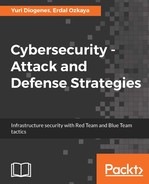Windows has a well-structured mechanism for controlling the privileges of all users in a network and on the local machine. It has a Windows User Account Control (UAC) feature that acts as a gate between normal users and admin level users. The Windows UAC feature is used to give permissions to the program, to elevate their privileges, and to run with admin-level privileges. Therefore, Windows always prompts users to permit programs that want to execute with this level of access. It is also notable that only admin users can allow programs to run with these privileges. Therefore, a normal user will be denied permission to allow a program to execute a program with admin privileges.
This looks like a failure-proof mechanism, whereby only administrators can allow programs to run with heightened privileges since they can easily tell the malicious programs from the genuine ones. However, there are some gaps in this mechanism of securing the system. Some Windows programs are allowed to elevate privileges or execute COM objects that are elevated without prompting a user first.
For instance, rundl32.exe is used to load a custom DLL that loads a COM object that has elevated privileges. This performs file operations even in protected directories that would normally require a user to have elevated access. This opens the UAC mechanism to compromise from knowledgeable attackers. The same processes used to allow Windows programs to run unauthenticated can allow malicious software to run with admin access in the same way. Attackers can inject a malicious process into a trusted process and thereby gain the advantage of running the malicious processes with admin privileges without having to prompt a user.
There are other ways that black hats have discovered that can be used to bypass UAC. There have been many methods published on GitHub that can potentially be used against UAC. One of these is eventvwr.exe, which can be compromised since it is normally auto-elevated when it runs and can, therefore, be injected with specific binary codes or scripts. Another approach to defeating the UAC is simply through the theft of admin credentials. The UAC mechanism is said to be a single security system and, therefore, the privileges of a process running on one computer remain unknown to lateral systems. Therefore, it is hard to nab attackers misusing the admin credentials to start processes with high-level privileges.
